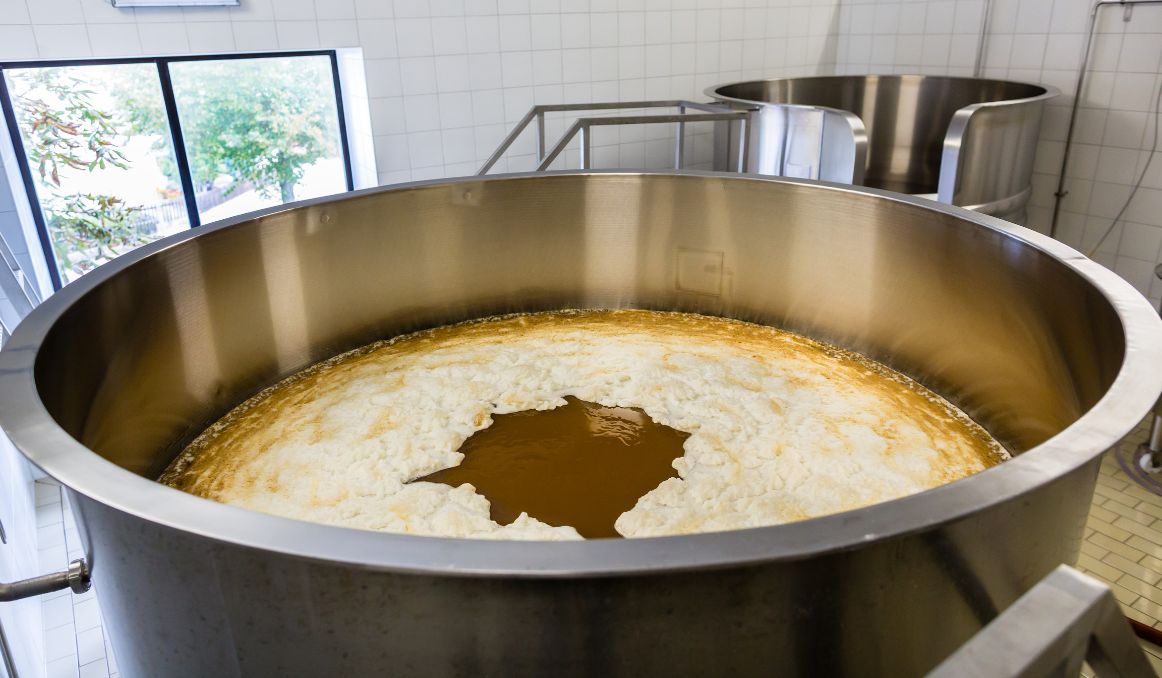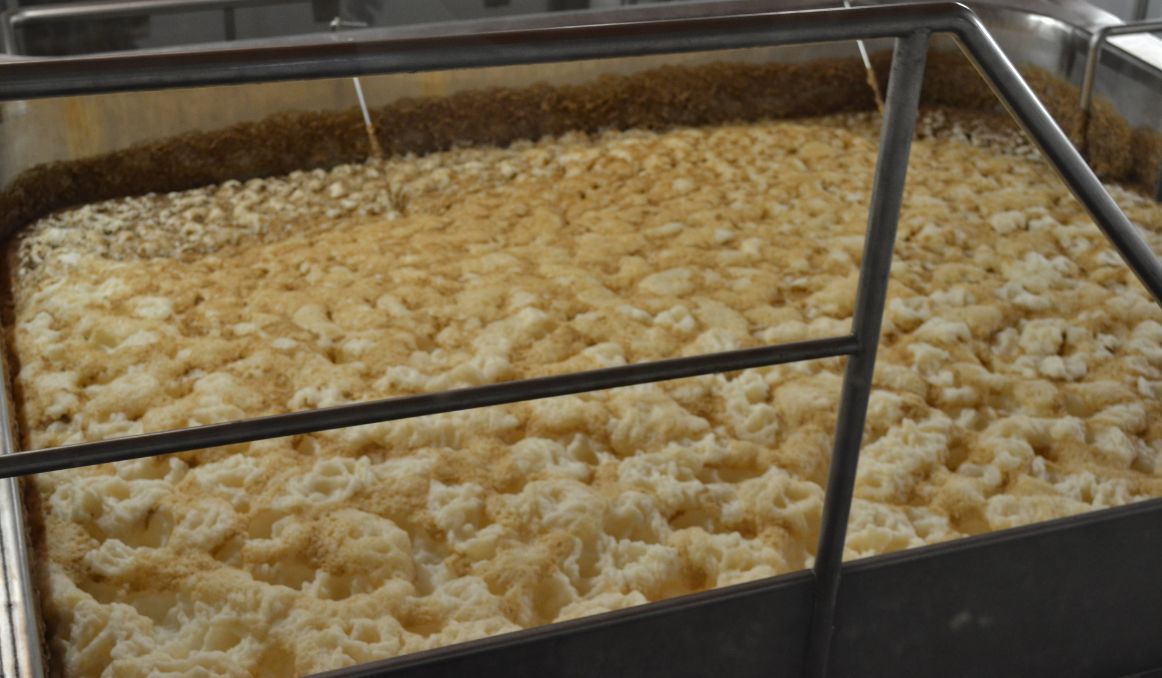What is Krausen in Beer Making?
Krausen is one of those terms, and one of those things, truly, that goes widely unheard of unless you are deeply involved in the brewing process. And even many brewers with a little experience are left asking themselves what is krausen in beer making, anyway?
Krausen, in the simplest definition, is simply the foam that forms on top of wort during the fermentation process.
But also, it is so much more than that.

Krausen
In the history of beer making, krausen is king.
Why?
Well, remember the brewing and fermenting process, and it will all become clear.
In the beginning, literally thousands of years ago, brewers had no way of doing yeast cell counting, no way to measure original gravity or specific gravity.
They did not have microscopes or apps on their phone.
Indeed, they had, and needed, very few tools.
Making beer is actually really, really simple.
The brewer would grow a cereal grain, roast it to sweeten it up, and then crack it open and boil it and steep it in water.
This process creates a kind of cereal tea, think of a runny oatmeal.
Now you have a brew of thick, rich, sugary liquid just longing to be devoured by the family.
It has been cleansed of most, if not all contaminants through boiling, and all of those good nutritious elements found in grain – potassium, folate, iron, and vitamin B just to name a few – have all been soaked in to the liquid, so any malnourished or hungry kid can get a ton of health benefits just from drinking this wort.
Then, when the wort is left out, exposed to open nature, the wonder ingredient finds its way in.
Yeast
As a single celled, eukaryotic, living organism, yeast has been on earth for millions of years, and its primary function as a member of the fungi family is to find sugar, consume it, and convert it to alcohol and carbon dioxide.
That’s it.
Yeast only needs a few things to stay alive – warmth, moisture, and oxygen.
And even when it is deprived of those things, it can often simply lie dormant until it gets them, which is why we can dehydrate yeast and ship it in paper packages, or why we can freeze it and revive it after years.
So when those brewers left their wort out, yeast, which is in virtually every environment, hovering about in the atmosphere, would naturally attract to the wort, dive in, and get to work consuming and converting the sugars in the depths of the liquid.
Krausen and Fermentation
What is taking place then, when the yeast is doing its business, is called fermentation.
Typically, within 24 hours of the time yeast arrives on the scene, or is added by a brewer, you can see bubbling, frothing, and other obvious signs of fermentation.
After a couple of days, you will see clear and present foam on the top of the wort, and this foam will whip itself up into a frenzy, rising in the vessel to make huge mountains of foam on the surface.
This foam is called the krausen, and it is a result of the production of carbon dioxide which creates bubbles in the wort, which then rise up through the wort and to the surface, creating that foam.
This stage of fermentation is called “krausening.”
Also read: How to Krausen Beer Like a Pro
While it might seem like a simple byproduct of fermentation today, and indeed it is, it was once and still can be the primary method of tracking progress for brewers.
Indeed, brewers for millennia watched their brew closely for the krausening as it went through its phases from early fermentation, active fermentation, peak fermentation, and finally the leveling off and end of primary fermentation.
Respectively, you will notice the krausening go from a mild foam to a roiling bubbling, frothy foam and then eventually dissipating to nothing at all.
And that was how brewers grew to know intimately every step of fermentation without microscopes, without devices, without apps.
Krausening Today

Today, brewers may be prone to think they no longer need to care about the krausening and that it is just a thing that happens, something silly that occurs, nothing to really concern themselves with.
And the reality is that nothing could be further from the truth.
Krausening is still an elemental factor in tracking fermentation, and tracking fermentation is a critical point for consistency.
And consistency is the single most important thing you can deliver to your loyal beer drinkers.
As brewers watch the brew turn from wort to beer, you can pay attention to each stage of krausening and take your measurements to see how your yeast is performing.
This is meeting the past with the future in the best of both worlds.
You rely on our ancestors ways of watching the krausening, and then utilize modern technology to make the best, and most consistent, possible beer for your fans.
You do this in two ways:
Specific Gravity
When you measure specific gravity along the way, you are recording how the ABV is progressing through the fermentation process.
Yeast Viability
When you keep track of your yeast viability, measuring your yeast cell count along the way, you can see how the yeast is performing comparatively to how your krausening is progressing, which will teach you which yeast strains to use and how you can expect it to perform.
Measuring specific gravity and yeast viability alongside watching your krausening helps you get to know your yeast performance and better gauge your expected outcomes for each batch of brew you make.
Eventually, you will be able to accurately predict your yeast performance and beer flavors, textures, and aromas, just by watching your krausening develop, which is the mark of a tried and true craft brewer.
And your technology will simply be there to back you up, or help you learn about new yeast and bacteria strains.
Cheers!
Passionate about the beer and/or wine making process? So are we! If you’re interested in finding out how you can use our technology to control fermentation and monitor your yeast, save work hours and improve the cost-efficiency of your business, drop us a line at [email protected] or check out our product pages:
- Oculyze BB 2.0 (Better Brewing) Yeast Cell Counter App + Hardware
- Oculyze FW (Fermentation Wine) Yeast Cell Counter App + Hardware
Also, you can now get access to a fully functional demo account to test your yeast via our Web App. Completely free of charge and with no commitment to purchase.


